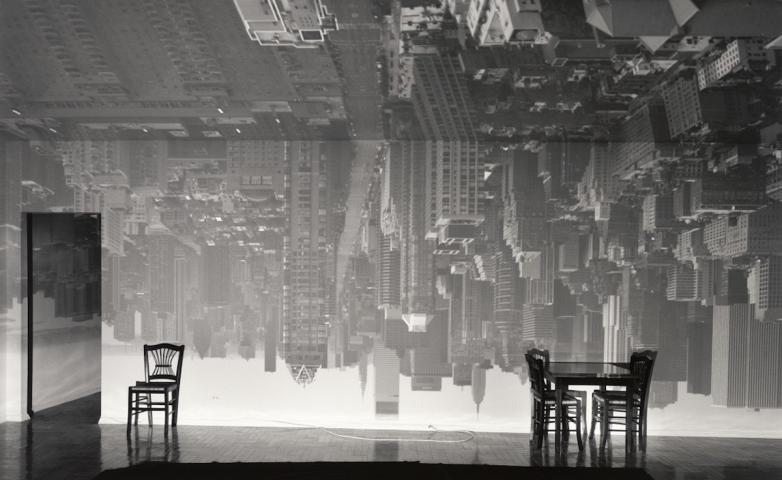Art of Illusion Photography Exhibition to Open at Nelson-Atkins Museum

Abelardo Morell's Camera Obscura Image of Manhattan View Looking South in Large Room, 1996. Gelatin silver print.
Kansas City, Missouri – Does photography accurately reflect the things we see? Or does it merely present illusions? Those are the central questions explored in an exhibition opening this fall at The Nelson-Atkins Museum of Art in Kansas City. Art of Illusion: Photography and Perceptual Play, curated by April Watson, is comprised of more than 50 photographs from the museum’s permanent collection, many of them recent acquisitions and never before on view. The exhibition runs Oct. 22 through April 25, 2022.
“The photographs in Art of Illusion provide engaging opportunities to consider the ways we form our perceptions of the world through photographs,” said Julián Zugazagoitia, Menefee D. and Mary Louise Blackwell CEO & Director of the Nelson-Atkins. “Seeing and believing have important correlations that impact our notions of truth and reality. That relationship, as understood in photographs, is not always obvious.”
The majority of works included in this exhibition date from 1970 to the present. Many of the artists use photography in combination with painting, drawing, or sculpture, fabricating subjects to be recorded by the camera. Others maneuver the camera’s optical and technical controls, creating clever visual puzzles that toy with our understanding of space, scale, and distance.
“It is great fun to view these works up close, to try to figure out how these photographs were made, and decipher what the artists are trying to convey about photography and its relationship to physical reality,” said April M. Watson, Senior Curator of Photography. “Many of these photographers have a wry and witty sense of humor, which is evident in the works themselves.”
The Art of Illusion is dedicated to John Pfahl (1939-2020), whose works are featured in the exhibition and who died of complications due to COVID early in the pandemic. Most of the artists featured work in a straight, documentary-style manner, working without the use of overt darkroom manipulations or editing software to construct their illusions. Photographers such as Arno Minkkinen, Lilly McElroy, Abelardo Morell, Graham Howe, Michel Szulc-Krzyzanowski, Zeke Berman, Grant Mudford, and Pfahl play with the fundamental laws of optics, perspective, and vantage point to create spatial confusion and optical illusions.
Other photographers, such as Robert Cumming, Jerry McMillan, Marcia Resnick, Rodrigo Valenzuela, and Liat Elbling find and fabricate subjects to be photographed, blurring the fictive and evidentiary functions of the medium. Artists Thomas Demand, John Divola, and Hiroshi Sugimoto explore the tenuous relationship between descriptive representation and original subject matter, prompting us to consider the role photography-as-illusion plays in shaping history and memory. Kenneth Josephson and Thomas Barrow disrupt the illusionistic space of the picture plane, calling attention to the way photographs are framed and mistakenly understood as seamless records. Duane Michels and Lew Thomas use language as imagery to challenge the correlation between photography and cognition.
Ruth Thorne-Thomsen, Michael Bishop, Vik Muniz and the team of Cortis & Sonderegger look directly to the history of photography for inspiration, re-conceiving iconic images and poking fun at the way these venerated photographs are constructed and understood as records of truth.
In a recent “photographic drawing” (and the only work in the exhibition created using Photoshop), David Hockney continues his longstanding investigation of image construction by unifying a variety of shifting vantage in a singular frame.















